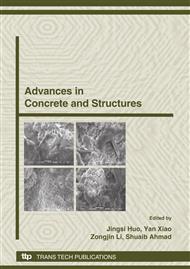p.17
p.27
p.37
p.43
p.55
p.69
p.81
p.89
p.101
The New Italian Code for Seismic Isolation of R.C. Constructions and Application to an Existing Bridge for Seismic Upgrading with a Hybrid Isolation-Dissipation Device
Abstract:
In this paper the new Italian seismic code issued in January 2008 is presented, with particular reference to the ample section devoted to constructions built with isolation and energy dissipation systems. Such attention is justified by the undisputed effectiveness of this design approach and by its increasing diffusion in the professional community. The code is based on Eurocode 8 [1], though resulting more synthetic and easier to use. During the last years of evolution, the code has significantly contributed to the development of new concepts in seismic isolation, such as the hybrid biaxial isolating/dissipating device here presented, obtained from parallel coupling of two different types of device: one mechanical, which realizes the necessary dissipation, and one elastomeric, which has the scope, beyond that of sustaining the vertical load, of reducing the deck residual displacement at the end of the seismic action. An application is shown of a seismically retrofitted highway bridge, in order to show the effectiveness of this device, both during, in terms of isolation, and at the end of the seismic event, in terms of residual displacements. For the sake of comparison, the same bridge is analyzed with different types of isolation techniques.
Info:
Periodical:
Pages:
55-68
Citation:
Online since:
October 2008
Authors:
Keywords:
Price:
Сopyright:
© 2009 Trans Tech Publications Ltd. All Rights Reserved
Share:
Citation:


